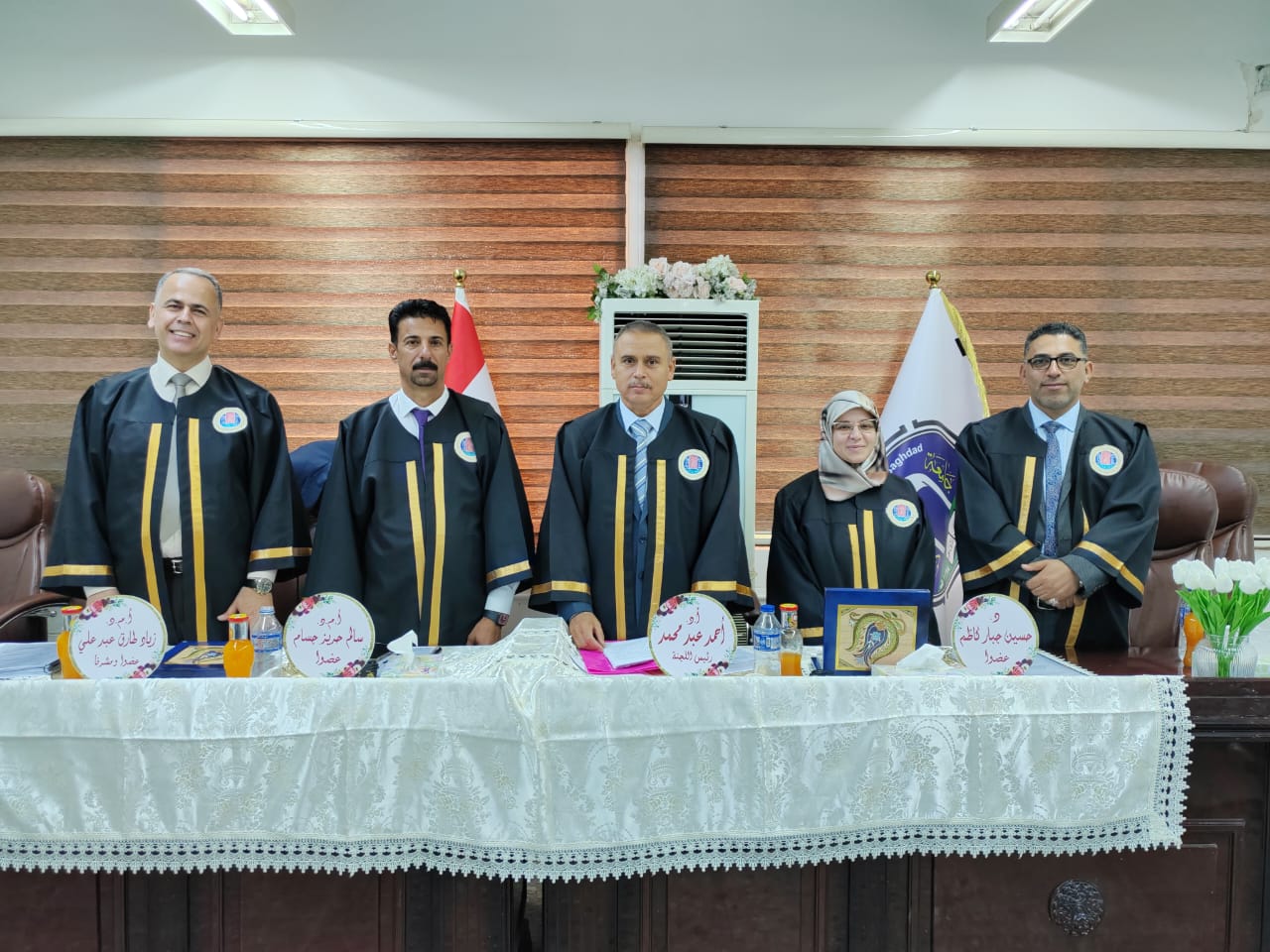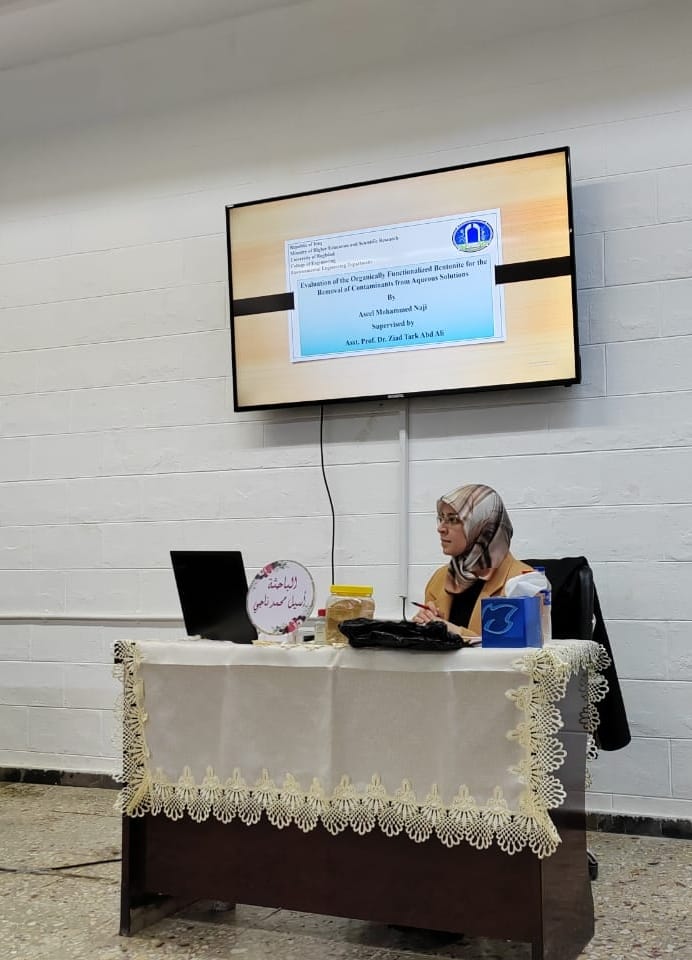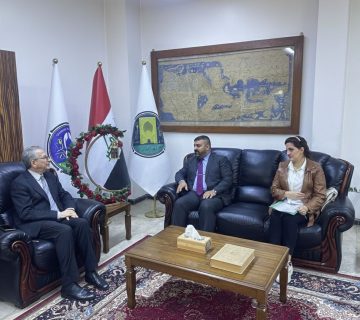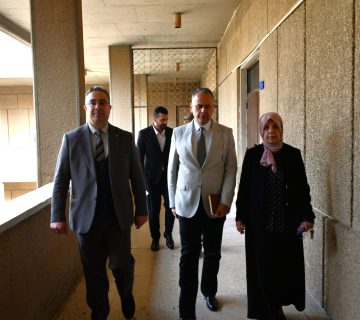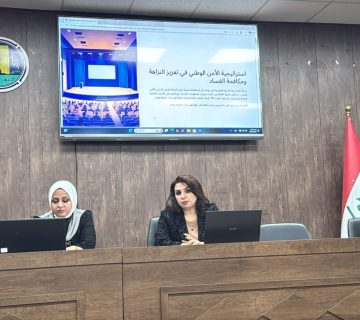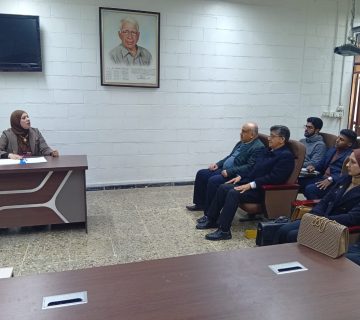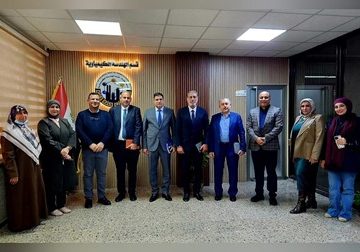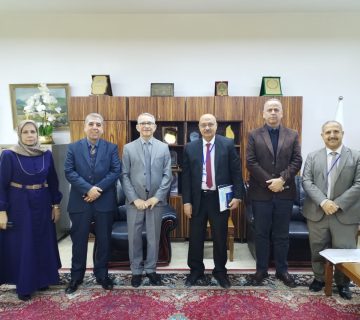Environmental Engineering Department at the College of Engineering, University of Baghdad, held MSc thesis examination on Wednesday 10\5\2023 titled:
“Evaluation of Modified Iraqi Natural Bentonite as an Active Material for Amoxicillin Removal from Aqueous Solutions”
By the student Aseel Mohammed Naji and supervised by Asst. Prof. Dr. Ziad Tariq Abd Ali. The examination committee consisted of Prof. Dr. Ahmed Abd Mohammed as Chairman, and the membership of Asst. Prof. Dr. Salim Hareiz Jassam and Dr. Hussein Jabbar Kadhim. After conducting the public discussion and listening to the student’s defense, the thesis was accepted. It was summarized as follows:
The objective of this study is to modify Iraqi natural bentonite (NB) as an available and low-cost raw material using various techniques to investigate the possible use of it as an active material for the elimination of amoxicillin (AMX) from aqueous solutions using batch and continuous modes. The modification process was achieved using different methods: (1) mixing NB with cationic surfactants (long and short alkyl chain surfactants) symbolized as (cetyltrimethylammonium bromide, CTAB) and (tetramethylammonium bromide, TMAB), respectively, and (2) thermal activation method to produce calcined bentonite (CB). The best ratios for the modification processes to produce NB-CTAB and NB-TMAB that achieved the highest AMX removal percent were 0.5 g CTAB/g NB and 0.6 g TMAB /g NB, respectively, while the thermal activation included heating the NB to 500 ̊C to produce the calcined bentonite (CB). Several techniques, including “surface area, scanning electron microscopy (SEM)”, and Fourier transform infrared” spectroscopy (FTIR)”, were used to characterize the native and modified bentonite. All these analyses confirmed that the modification processes have been completed successfully and cationic surfactants (CTAB and TMAB) that were used in the modification process have overlapped with the components of the NB to produce the modified bentonite (MB) and the thermal activation of NB was enhanced its properties.
Batch experiments were done to study the sorption of AMX using MB under different parameters such as contact times (0-4 hours), pH of solutions (2-11), agitation rates (0-250 rpm), initial AMX concentrations (50-250 mg/L), and sorbent doses (0.05-1 g/100 ml). The optimal values for these parameters were found to be 3.5 hours for contact time, pH values (10, 6) for MB with surfactants and thermal activation, respectively, an agitation rate of 250 rpm, an initial AMX concentration of 50 mg/L, and sorbent dosage of 0.8, 0.9, and 0.8 g/100 mL which provided maximum removal efficiencies of 96%, 70%, and 94% for NB-CTAB, NB-TMAB, and CB, respectively. Freundlich isotherm” model, with an R2 of not less than 0.9123, adequately described the adsorption data for all types of MB. The results confirmed that the chemisorption mechanism was dominating by showing that the measured results were more precisely described by the pseudo-second-order” model. Three tested reactive systems or mixtures have been used in the column experiments by mixing the MB with glass waste (GW) to increase the bed hydraulic conductivity and avoid its blockage, these systems were: M1 (2MB/1GW), M2 (2MB/2GW), and M3 (2MB/3GW). The results illustrated that the M2 (2MB/2GW) reactive system was more appropriate than others in continuous mode, so it was adopted in all column experiments. In addition, the continuous mode experiments showed that the AMX spread was restricted by the reactive media in different proportions, the AMX spread in bed (NB-TMAB/GW) was faster than the two other reactive beds (NB-CTAB/GW & CB/GW) at the same flow rate and operating time. Finally, the continuous data from experiments were adapted using five breakthrough curve models: Clark, Yan, Thomas, Bohart-Adams, and Belter-Cussler-Hu models. As a result of the above, the trials showed the modifications that were made enhanced NB’s capacity to extract AMX from aqueous solutions.

